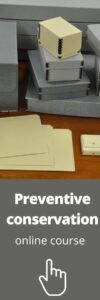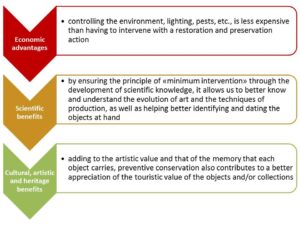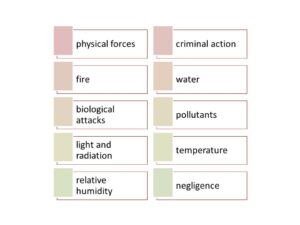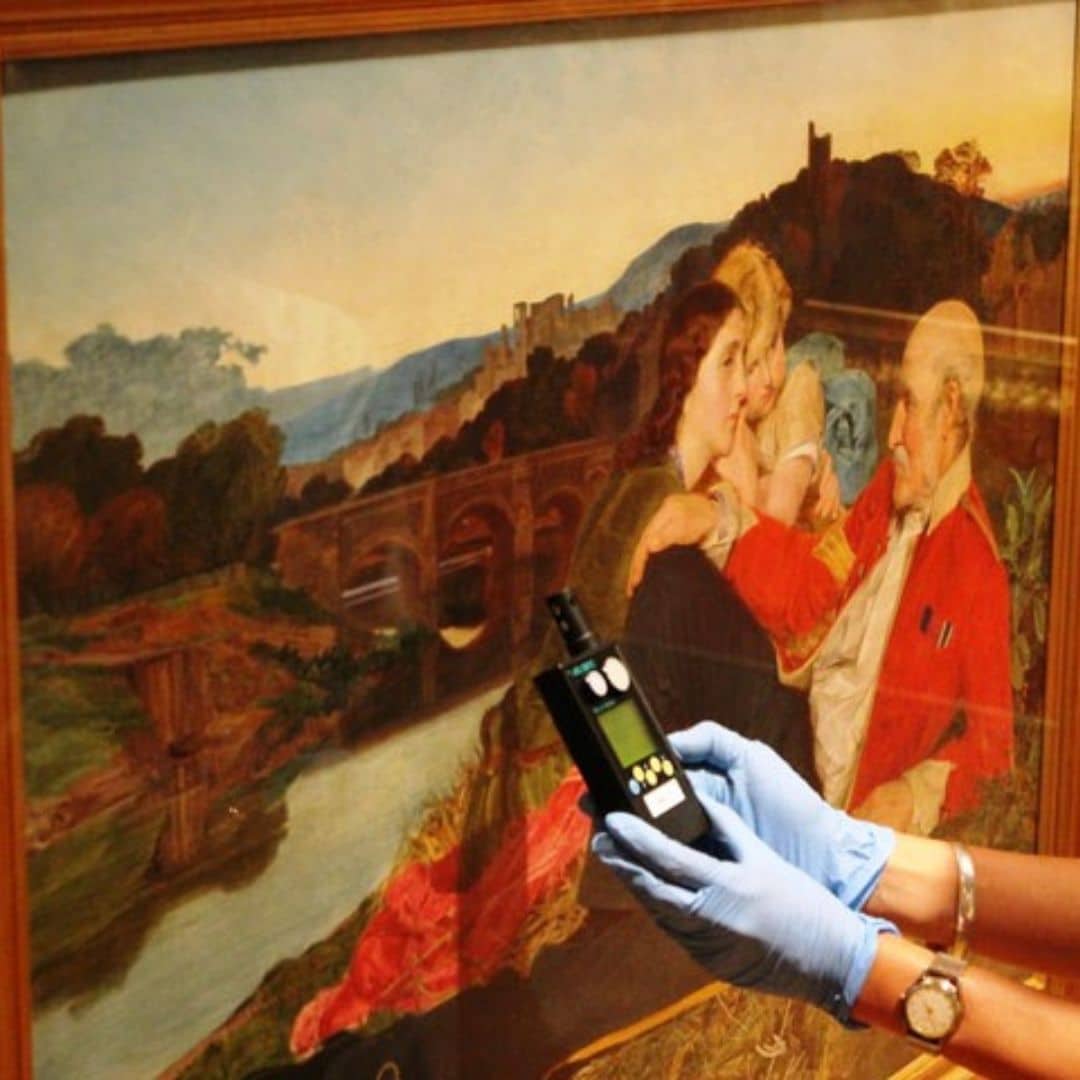Risk management program: 4 key points
The preservation of collections requires the implementation of a risk management program in a museum or private context.
Depending on the size of the collection, the typology and diversity of works and their exposure / storage conditions, this task can be more or less laborious.
But using the appropriate methodology and registration tools the establishment of a risk management program can be simple.
4 key points for a risk management program
- Identification of possible hazards to the collection;
- Risk assessment;
- Identification of possible strategies to mitigate risks;
- Your assessment of the costs and benefits of each strategy.
You can see a summary of this methodology – risk management program – in the video below.
1. Identification of possible hazards to the collection:
This identification starts by analyzing the 10 agents of deterioration:
- physical forces,
- criminal action,
- fire,
- water,
- biological attacks,
- pollutants,
- light and radiation,
- temperature,
- relative humidity,
- negligence
Each one of these agents of deterioration can manifest itself according to a classification of risk based on the analysis of the frequency of occurrence and the degree of effect/intensity on the subject and collections.
The first and indispensable step in a risk management program is to identify the risks and their effect and occurrence
Generally speaking we consider these risks in a scale of 1 to 3, being:
1 – rare risk and of catastrophic effect;
2 – moderate occurrence risk but of severe intensity;
3 – constant risk of occurrence and of moderate intensity.
Within what we consider general risks, there are those specific to a particular type of museum, collection, geographic location,…
2) Risk assessment:
For a risk management program it is also necessary to register the occurrences (for example: equipment failures, floods, earthquakes or landslides) in order to estimate the frequency with which they occur.
Assessing risks and their probability of occurrence may contribute to a reduction of expenditure, but it mainly represents less damage (often irreversible) in cultural goods.
The effects of risk factors depend on the materiality of the objects (what the objects are made of).
A simple form or table might serve as a risk assessment tool.

This table allows us to quickly analyze the vulnerability of materials, using a scale of 1 to 5 (5 being for higher-risk cases and 1 for the least exposed to risk).
3) Identification of possible strategies to mitigate risks:
Once the risks have been analyzed, the levels of damage they can cause and their frequency of occurrence, the next step in a risk management program is to establish strategies to reduce occurrences.
Planning strategies to reduce the impact of the occurrence is required to predict and assess the action of risk factors.
There are 3 basic methods to mitigate risks:
- Eliminate the source of the risk;
- Establish a barrier;
- Act on the agent responsible for the risk.
4) Your assessment of the costs and benefits of each strategy:
In implementing a risk management program we must always take into account the cost / benefit ratio of each strategy / action. This evaluation can only be carried out based on a correct evaluation of the risks according to the methodology described above.
What advantages are there in adopting a preventive conservation policy?

The Canadian Institute for Conservation provides technical documentation on risk management in Museums. You can consult HERE
In the preventive conservation course we will learn about the concepts and methods of preventive conservation, how we can protect our heritage and prevent its destruction.
Part 1 – Preventive Conservation
1.1. Preventive conservation
- General notions
- Basic principals
- Institutions
1.2. Preventive conservation plan: what to do and how to implement it?
1.3. Contingency plan
Part 2 – Preventive conservation plan and risk assessment
- What is preventive conservation
- Advantages of a preventive conservation plan
- How to implement a risk management program : methods and tools
- Risk assessment methodology
- Risk assessment tools
- Practical example of risk assessment
Part 3 – Agents of deterioration and control measures
- Universal agents
- Specific agents
- Physical agents
- Chemical agents
- Biological agents
Part 4 – Display materials, storage and handling
- Maintenance
- Exposure methods
- Transport and handling



